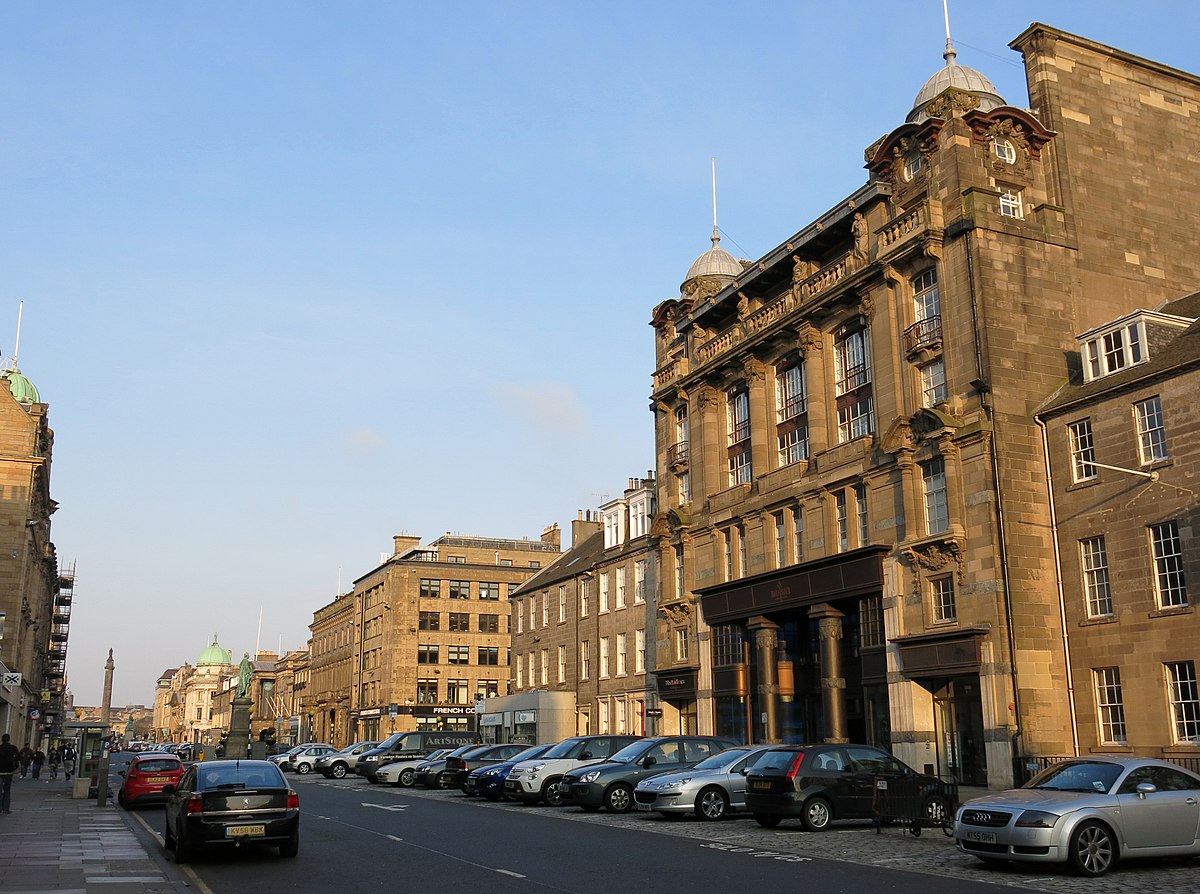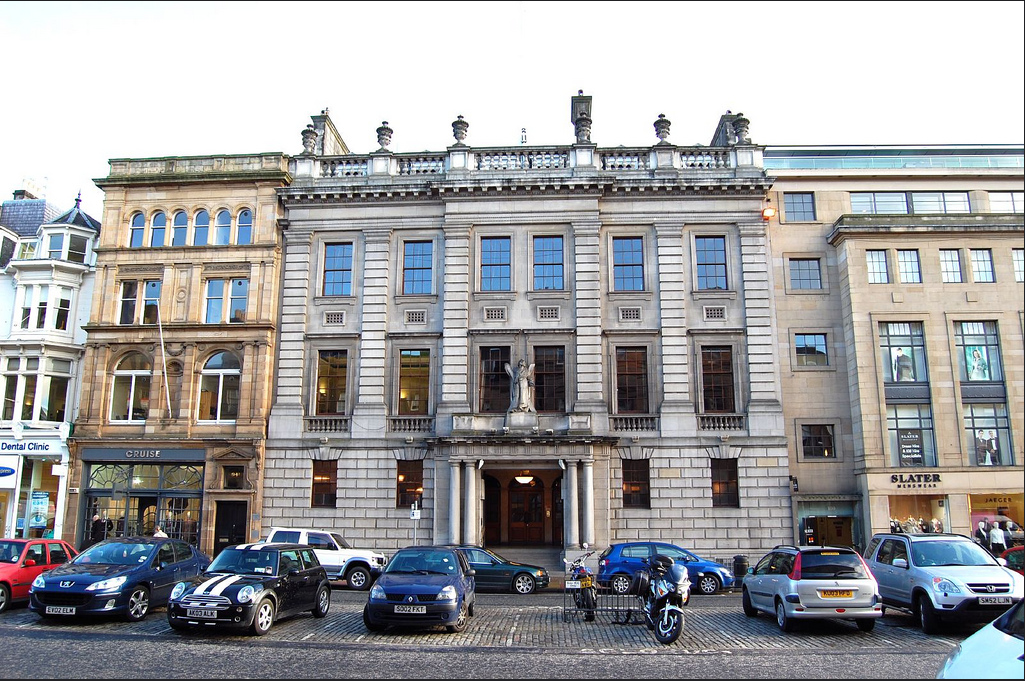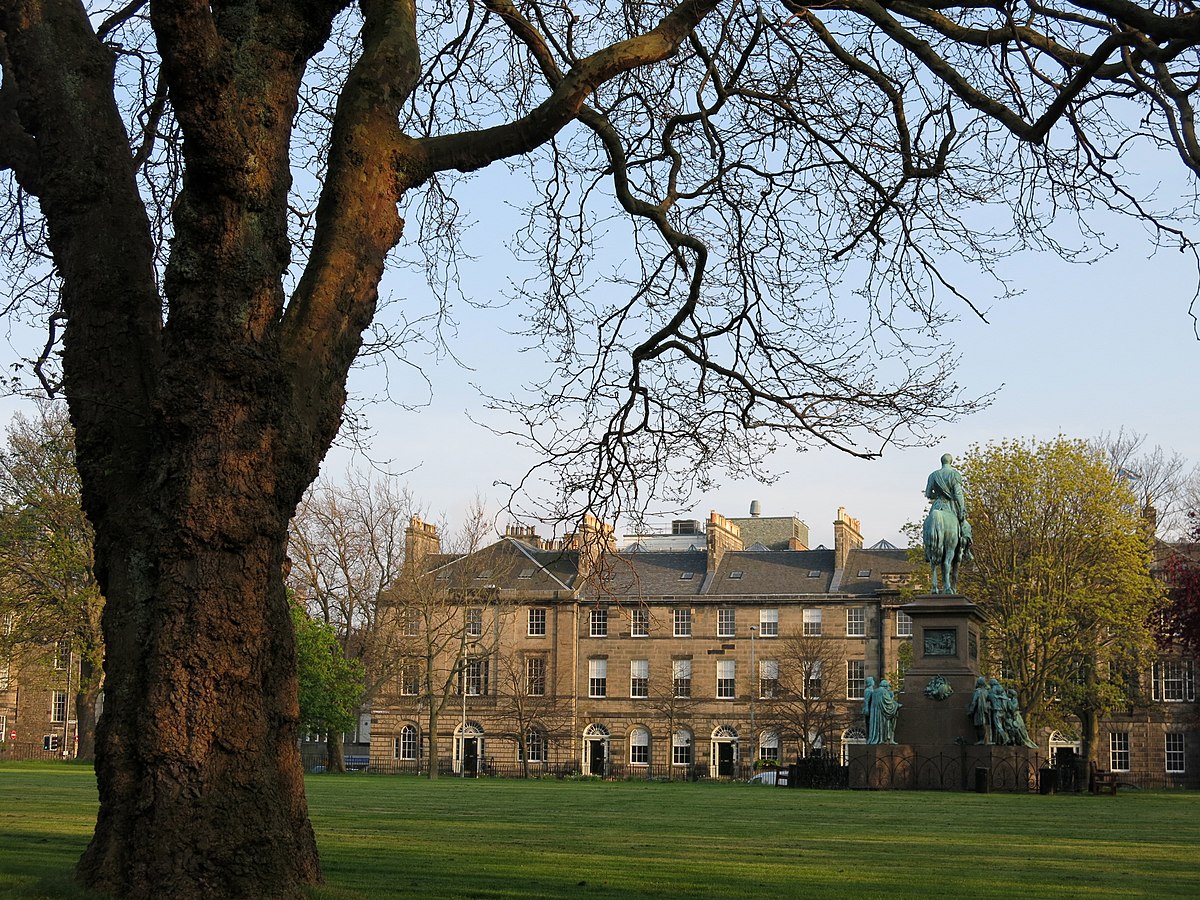
Charlotte Square with the Statue of Prince Albert
Photography: Enric, Wikimedia Commons (BY-SA)
Charlotte Square
By the middle of the 18th. century the Old Town of Edinburgh had reached breaking point in terms of overcrowding and squalor. This was the motivation for the ambitious, but ultimately highly successful project of the New Town, designated (along with the Old Town of Edinburgh) a UNESCO World Heritage Site in 1995. In 1752, Lord Gilbert Elliot Minto authored the Proposals for Carrying on Certain Public Works in the City of Edinburgh. However, the champion of the project was the Lord Provost George Drummond, who obtained approval from the Town Council to extend the city northwards. A competition for the design was launched and won by James Craig, who was aged only 21 at the time.
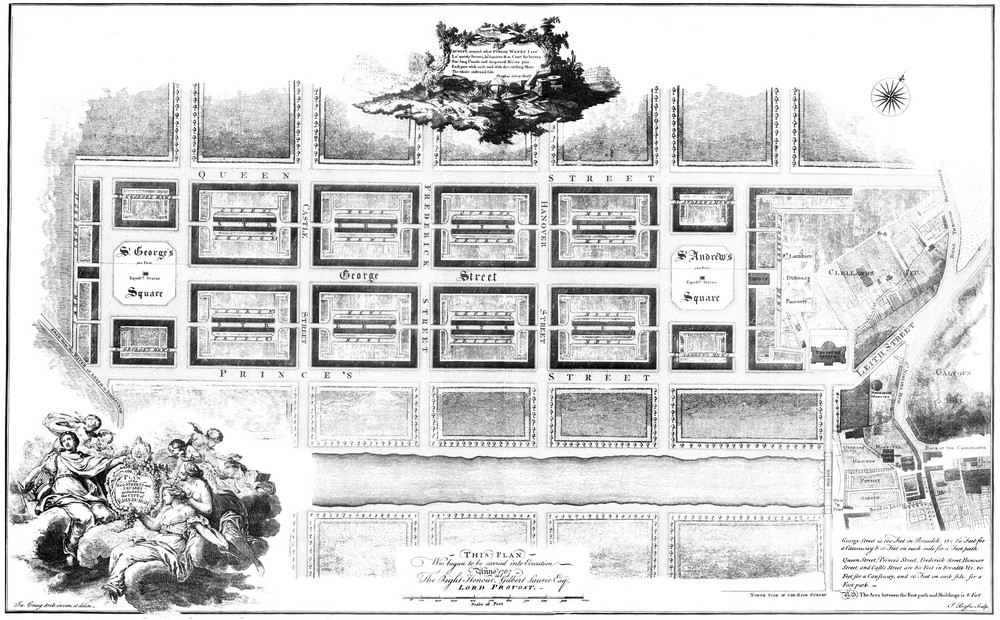
Map of the first plan of Edinburgh New Town by James Craig, 1768
{By <span class="wikiexternallink" xmlns="http://www.w3.org/1999/xhtml"><a class="wiki" href="http://www.geographicus.com/mm5/cartographers/jcraig.txt"><span class="wikigeneratedlinkcontent">http://www.geographicus.com/mm5/cartographers/jcraig.txt</span></a></span> [Public domain], via Wikimedia Commons}
The plan also required the draining of the Nor Loch (location of the current Princes Street Gardens) and the construction of the North Bridge to allow access between the Old and New Towns. Successively, this first New Town was extended further to the north, west and east.
We begin our walk through the New Town outside West Register House (originally St. George's Church) in Charlotte Square, which was actually the last section of the first New Town to be completed. Initially called St. George's Square, it was renamed Charlotte Square in 1786 after the wife and daughter of George III, to differentiate it from George Square on the south side of the city (see section 13 of the Old Town Walk narrative). This square was designed by Robert Adam (see section 10 of the Old Town Walk narrative) and is architecturally uniform. As we walk clockwise around the square from West Register House, note the plaque at number 14 where Lord Henry Cockburn (1779–1854) lived from 1813 to 1848. Cockburn contributed regularly to the Edinburgh Review (see the eponymous chapter of the Old Town Walk narrative) in which he was also described as: "rather below the middle height, firm, wiry and muscular, inured to active exercise of all kinds, a good swimmer, an accomplished skater, an intense lover of the fresh breezes of heaven. He was the model of a high-bred Scotch gentleman…" His Memorials of his Time, published posthumously in 1856 provides a valuable chronicle of Edinburgh society during his life.
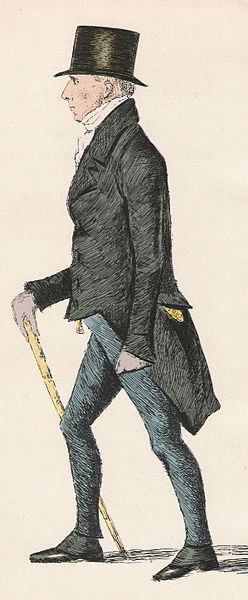
Lord Cockburn, from the Etching in Crombie's Modern Athenians
{The original uploader was David Lauder at English Wikipedia [GFDL (<span class="wikiexternallink" xmlns="http://www.w3.org/1999/xhtml"><a class="wiki" href="http://www.gnu.org/copyleft/fdl.html)"><span class="wikigeneratedlinkcontent">http://www.gnu.org/copyleft/fdl.html)</span></a></span> or CC-BY-SA-3.0 (<span class="wikiexternallink" xmlns="http://www.w3.org/1999/xhtml"><a class="wiki" href="http://creativecommons.org/licenses/by-sa/3.0/)"><span class="wikigeneratedlinkcontent">http://creativecommons.org/licenses/by-sa/3.0/)</span></a></span>], via Wikimedia Commons}
Continue a further 50 metres clockwise to numbers 6 and 7 Charlotte Square.
The Georgian House at number 7 Charlotte Square has been restored in the style of its first owner and is open to the public. It illustrates how the wealthiest lived in Enlightenment Edinburgh. The first resident from 1796 to 1815 was John Lamont of Lamont, 18th Chief of the Clan Lamont. Lamont paid £1,800 for the home. He was extravagant, furnishing the house lavishly, employing many servants and indulging in expensive entertainment as was expected during that era. He bequeathed considerable debt to his son, also John, who sold the house in 1826 for £3,000 to Catherine Farquharson of Invercauld.
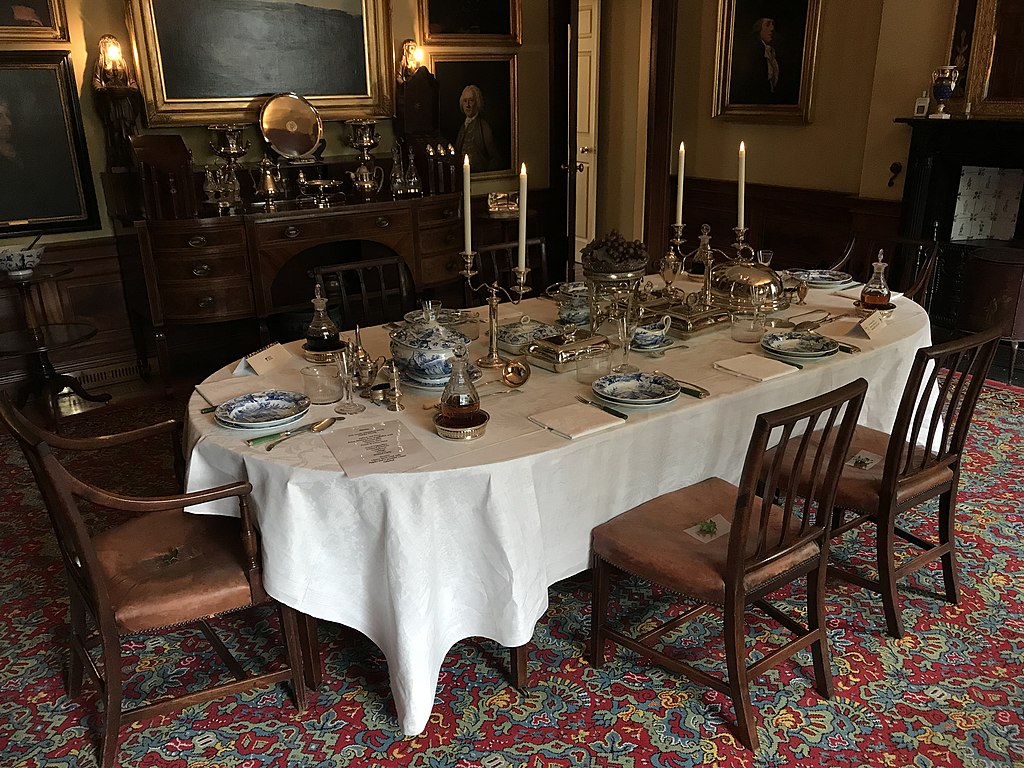
Georgian House, dining table
Photography: Hchc2009, Wikimedia Commons (BY-SA)
Number 6, Bute House, is perhaps the most imposing house on the square and is currently the official residence of the First Minister of Scotland. The plot was first sold for £290 to Orlando Hart in 1792, who was a shoemaker, Town Council member and deacon-convener of the trades in Edinburgh.
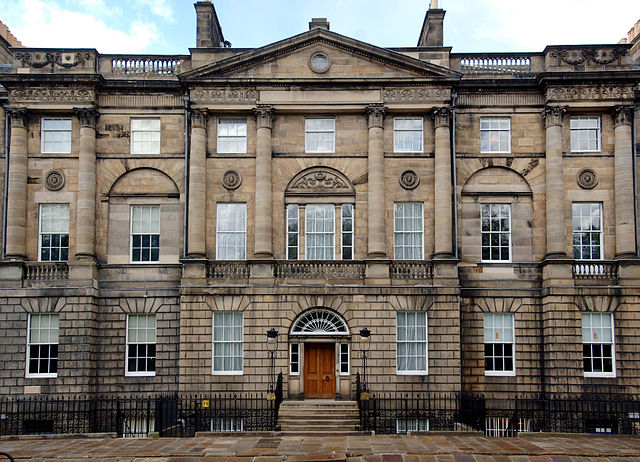
The Bute House
Photography: Scottish Government, Wikimedia Commons (BY-SA)
